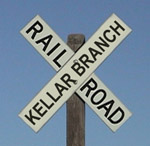 On Friday, April 16, the Surface Transportation Board approved discontinuing rail service on the Kellar Branch line that runs through the heart of Peoria. The Board also agreed to railbank the corridor, meaning it technically could be reactivated in the future for rail use, although reactivation of railbanked corridors rarely ever happens. Railbanking preserves the corridor and assures that no part of it can revert back to the ownership of adjacent property owners.
On Friday, April 16, the Surface Transportation Board approved discontinuing rail service on the Kellar Branch line that runs through the heart of Peoria. The Board also agreed to railbank the corridor, meaning it technically could be reactivated in the future for rail use, although reactivation of railbanked corridors rarely ever happens. Railbanking preserves the corridor and assures that no part of it can revert back to the ownership of adjacent property owners.
The City of Peoria, Village of Peoria Heights, and the Peoria Park District now have 180 days to approve an agreement converting this corridor to a recreational trail. According to the STB decision, the Park District will have to “assume financial responsibility for the management of [and] any legal liability arising out of the transfer or use of [the right-of-way].”
You may recall that the inscrutable “Kellar Branch Corridor Corporation” made this possible by buying out the interests of rail carriers Pioneer Industrial Railway and Central Illinois Railroad, as well as shipper Carver Lumber. It’s been my contention that the price for buying out those interests will eventually be paid by the taxpayers, either through the City or the Park District. I expect we’ll find out what the cost was in the next few months as the Park District prepares to convert the line to a trail.
Besides the big hit taxpayers will get for buying out those interests, we’ll also be paying for the conversion itself, which is estimated to cost $6 million as of October 2008, and is partially funded by grants (which are themselves federal and state tax dollars). The Chronicle will be watching to see if the Park District’s actual costs of conversion deviate significantly from their estimates.
